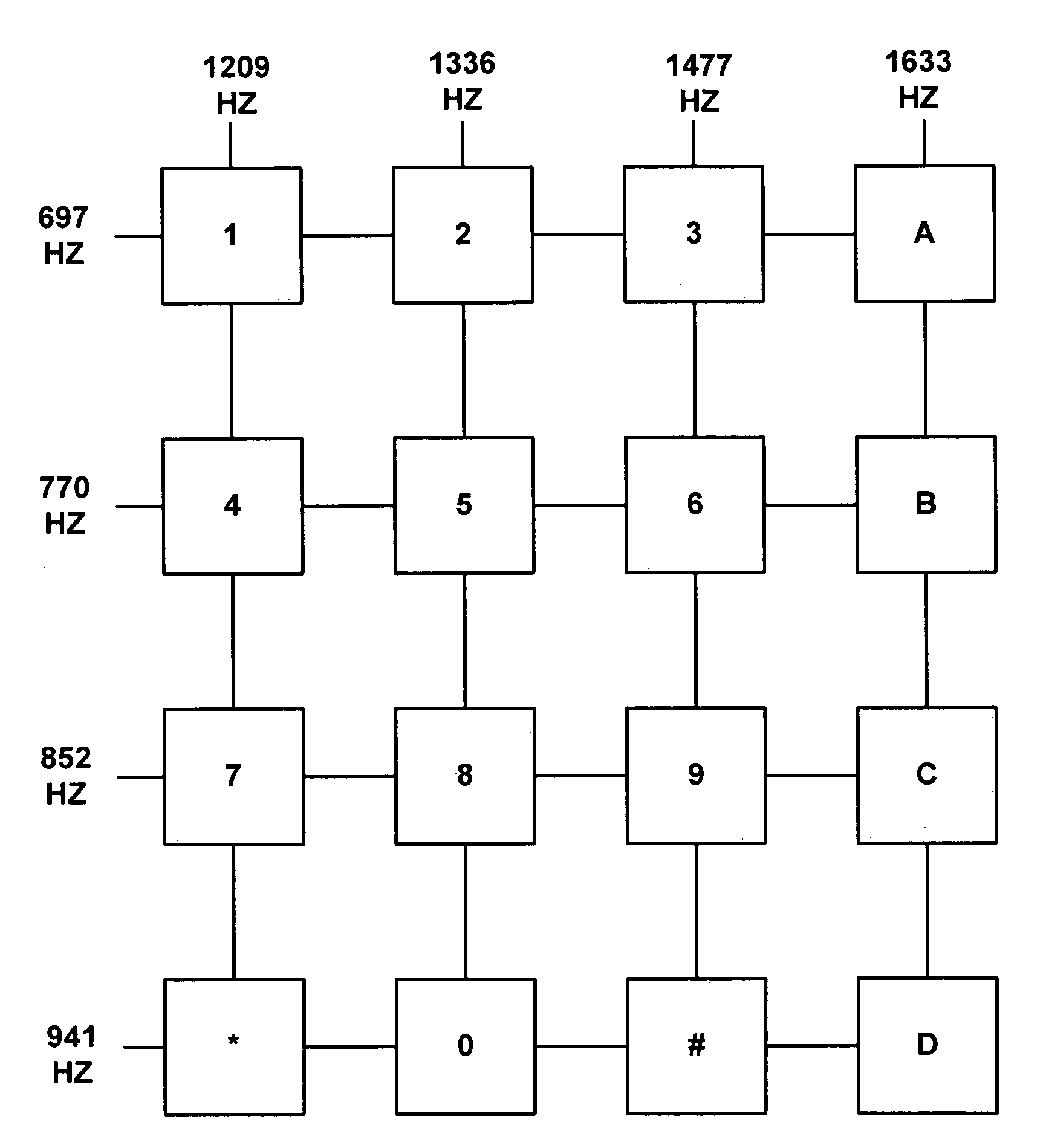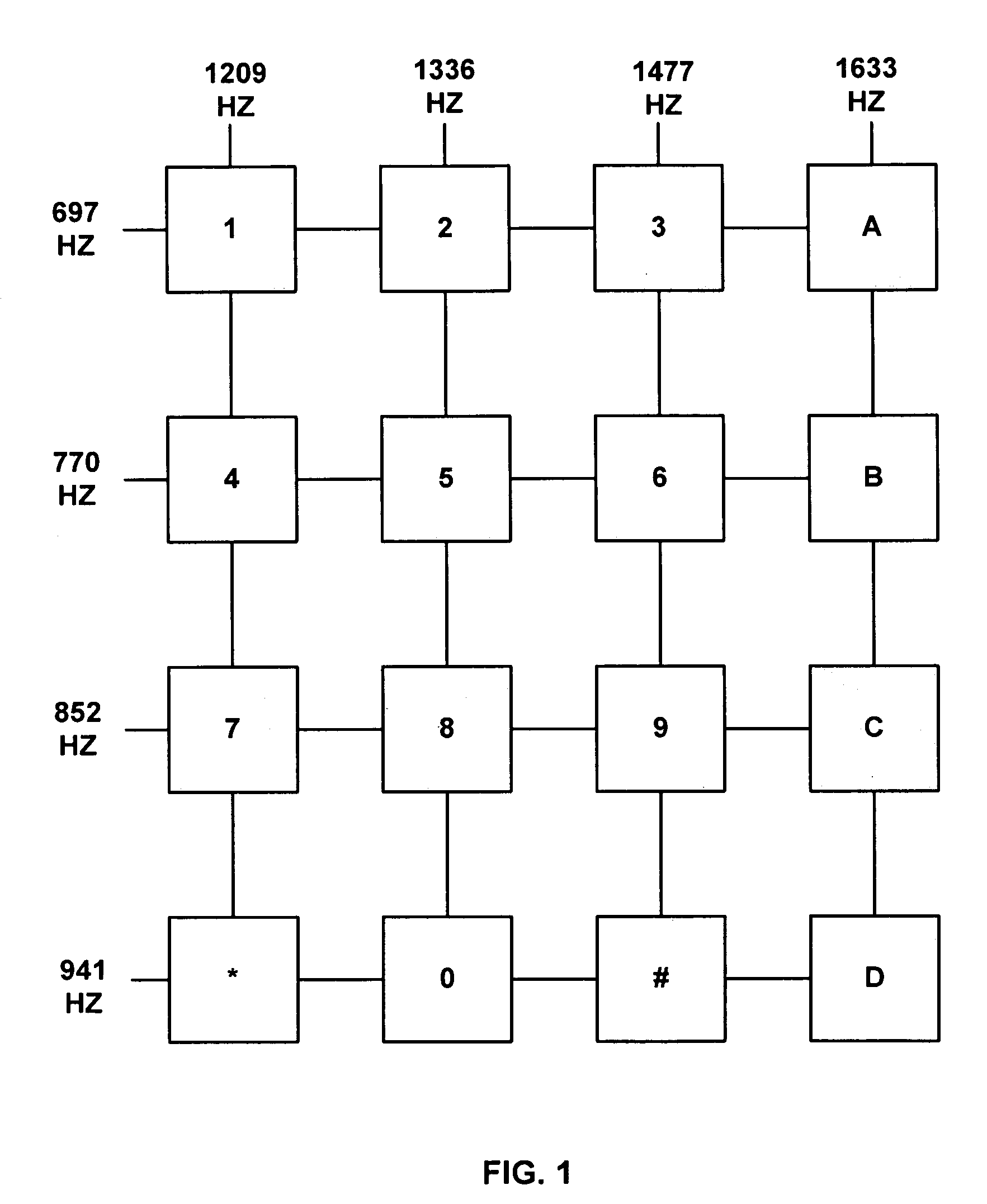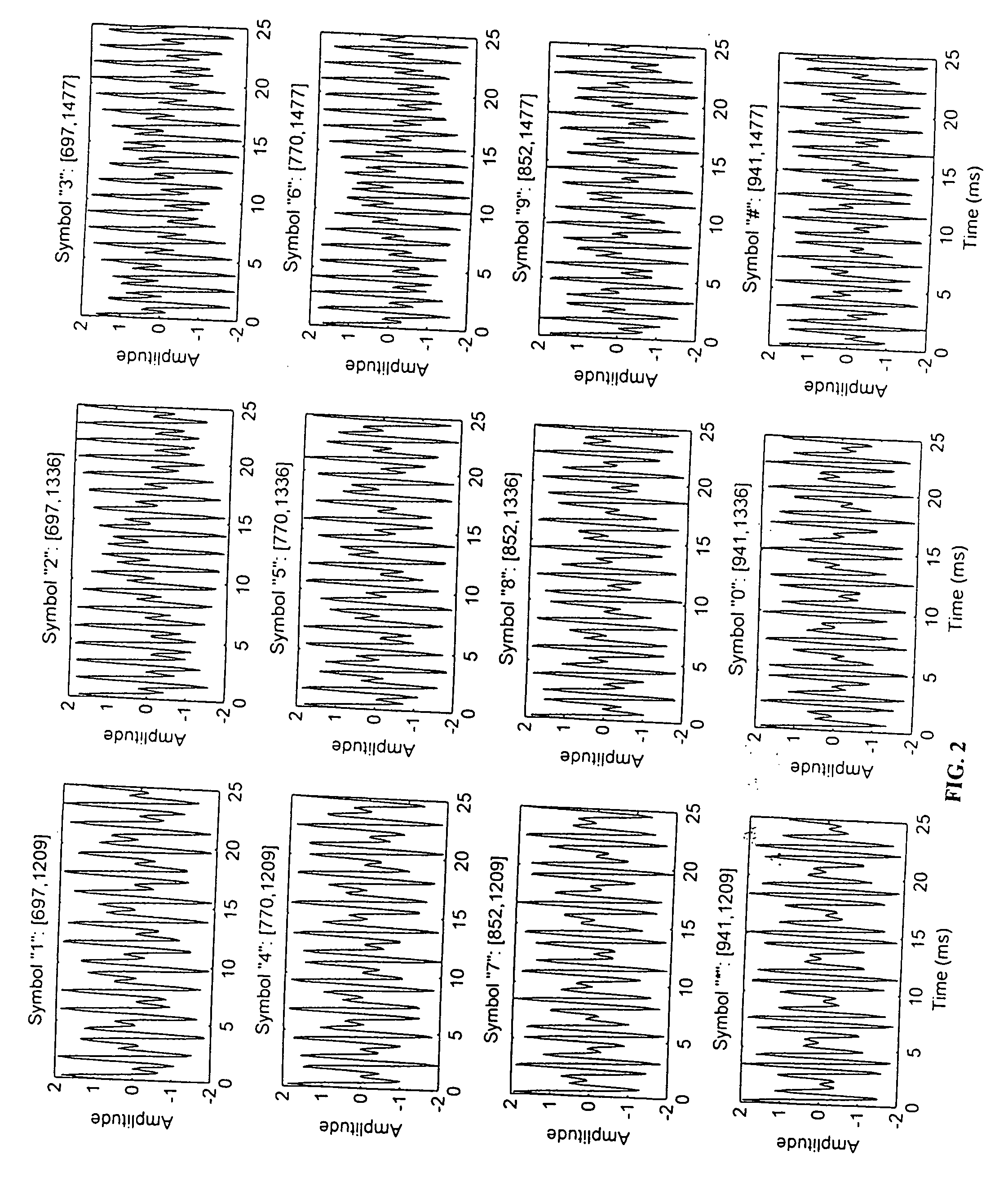Method and apparatus for evaluating possible 3-way call events
- Summary
- Abstract
- Description
- Claims
- Application Information
AI Technical Summary
Benefits of technology
Problems solved by technology
Method used
Image
Examples
Embodiment Construction
[0049]FIG. 1 is a representation of the standard 16-key DTMF keypad with associated high and low frequencies for signals generated by the depressing of each key. In common usage only the left-most three rows of the 16-key keypad are used for normal telephone calling in many countries, including the United States. The ‘*’ and ‘#’ keys are normally not used to dial telephone numbers, but rather are used for a variety of control functions.
[0050]The international telephone standards organization known as the ITU-T (International Telecommunications Union—Telephony) has issue so-called recommendations that are followed widely around the world. These standards are known as Q.23, Technical Features of Push-Button Telephone Sets, and G.224, Maximum Permissible Value for the Absolute Power Level (Power referred to One Milliwatt) of a Signalling Pulse). Q.23 specifies the frequencies to be used and the tolerances for deviation from nominal frequencies and for allowed distortion. From this, it ...
PUM
 Login to View More
Login to View More Abstract
Description
Claims
Application Information
 Login to View More
Login to View More - R&D
- Intellectual Property
- Life Sciences
- Materials
- Tech Scout
- Unparalleled Data Quality
- Higher Quality Content
- 60% Fewer Hallucinations
Browse by: Latest US Patents, China's latest patents, Technical Efficacy Thesaurus, Application Domain, Technology Topic, Popular Technical Reports.
© 2025 PatSnap. All rights reserved.Legal|Privacy policy|Modern Slavery Act Transparency Statement|Sitemap|About US| Contact US: help@patsnap.com



